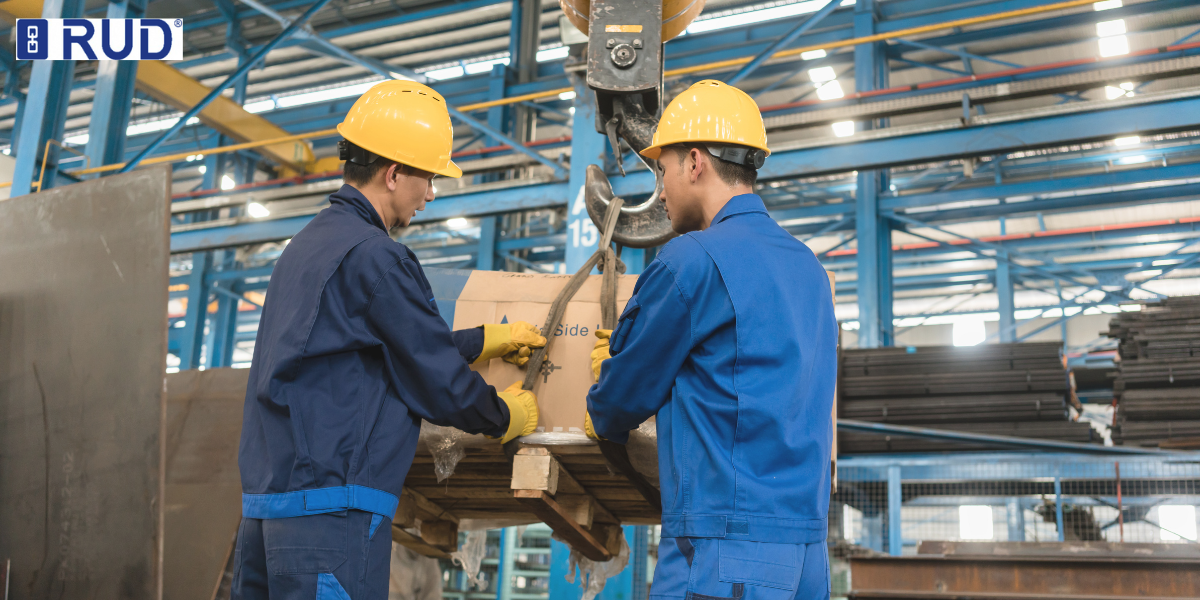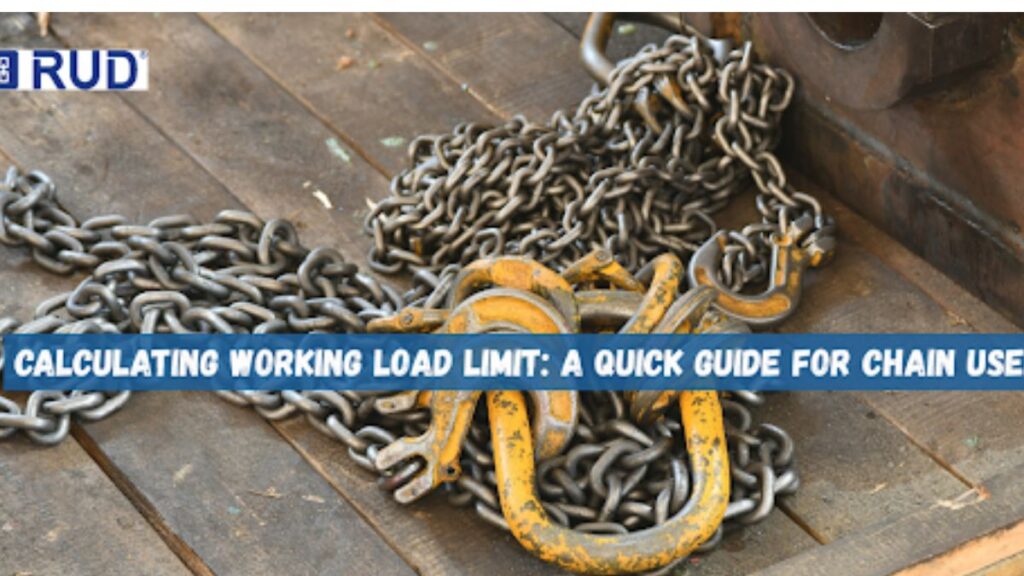The working load limit (WLL) is the maximum weight your lifting equipment can safely handle. That’s the basic idea, but you need more. You should know how to find the WLL rating, calculate it for different setups, and apply it correctly. Otherwise, getting it wrong leads to equipment failure or injuries.
This guide shows you how to locate WLL ratings, calculate adjustments for lifting angles, and follow practices that extend equipment lifespan. These skills keep your lifting operations safe and prevent costly accidents.
The reason people are concerned about this is simple. Ignoring WLL guidelines causes equipment damage, injuries, and fatalities. In fact, WorkSafe authorities have documented serious incidents from lifting failures. That’s why working with experts like RUD Chains, with 140+ years of experience, helps you maintain safe operations.
Ready to learn more? Let’s get started.
What Is a Working Load Limit?
As we’ve already mentioned, WLL is the maximum load that lifting equipment can safely handle during normal use. But are you really aware of the number stamped on your chains, slings, and hooks that tells you exactly how much weight the gear can lift without risk? If not, then you need to understand that manufacturers don’t just pick these numbers randomly.
Here’s what you need to know about how WLL keeps your lifting operations safe.
- The Safety Factor Built Into Every Rating:
Your chain’s WLL sits significantly below its actual breaking point. Manufacturers intentionally design this gap to protect against wear, shock loads, and harsh conditions. This safety margin means your equipment can handle stress from real-world operations without reaching its failure point.
- How WLL Differs From Breaking Strength:
WLL is the safe load limit for normal use, while breaking strength is the force that causes equipment to actually fail. People often mix up these two measurements. Your WLL rating is significantly lower than the breaking strength to ensure safe operations. To determine that margin, manufacturers conduct extensive testing and ensure compliance with Australian Standards.
- The Cost of Exceeding Safe Working Loads:
Using equipment beyond its safe working load increases the risk of accidents. The risks include far more than damaged hooks or stretched chains. We’re talking about dropped loads, injuries, and fatalities. That’s exactly why following the WLL protects both people and equipment lifespan across cranes, hoists, and lifting operations in many industries.
Now that you understand what WLL means, let’s look at how to find and calculate it for your specific equipment.
Finding and Calculating Your Chain’s Safe Working Load
It’s one thing to understand WLL, but another to find and calculate it correctly. Once you locate the rating stamped on your chain, the work isn’t done. You need to adjust that number based on how you’re rigging the load.

Follow these steps to get it right every time.
- Locate the Markings: Check for tags, stamps, or embossed markings on your chain or fittings. Every piece of lifting equipment displays its WLL clearly. Drawing from our 140+ years of manufacturing experience, we’ve found that clear markings prevent the majority of lifting miscalculations.
- Account for Your Lifting Configuration: And that’s where things get interesting. Your lifting capacity changes significantly between single-leg setups and multi-leg slings. Beyond that, the angle of your lift also affects capacity because steeper angles between sling legs reduce what you can safely lift.
- Apply the Reduction Factors: A 60-degree included angle maintains full capacity, but steeper angles require derating. The same principle applies to choker hitches, which reduce your WLL compared to straight lifts. When your calculation leaves you with a decimal or fraction, always round down for safety rather than up.
- Never Exceed the Lowest Rated Component: Your chain might handle 2 tonnes, but if your crane hook is rated for 1.5 tonnes, that’s your limit. This mismatch between components is where most lifting accidents actually happen. Every component in your rigging has a rated capacity, and you must stay within all of them.
One wrong number can shift a routine lift into dangerous territory, so double-check your calculations before every operation.
Good Practices to Ensure Safety and Extend Equipment Lifespan
Calculating WLL correctly is essential, but maintaining safe operations goes beyond the numbers. Along with accurate calculations, you also need good practices that ensure your lifting equipment performs reliably over time while keeping your team protected. These habits prevent accidents and extend the lifespan of your investment.
 Let’s focus on practices that keep your gear working longer and your team safer.
Let’s focus on practices that keep your gear working longer and your team safer.
Inspect Before Every Use
Visual checks for wear, deformation, and cracks should happen before each lift. You know what to look for from the steps above, so make this inspection routine part of every single operation. If you spot any damage, remove that equipment from service immediately and tag it for repair or replacement.
Document Your Load Calculations
Keep records of your lift plans and WLL calculations for every operation. Because WorkSafe inspectors specifically ask for these during audits, proper documentation protects you legally. This habit becomes especially valuable for complex or repetitive lifts where you can reference past calculations.
Train Your Team Properly
Everyone handling chains and slings needs to understand WLL and how to apply it correctly. Our technical support team regularly conducts on-site training, and we’ve noticed that sites with annual refreshers have fewer rigging incidents. That’s because refresher training catches bad habits before they cause accidents and helps protect both your people and your equipment’s lifespan.
When inspection, documentation, and training become standard practice, you create a culture where accidents are prevented rather than managed.
Final Thoughts on Working Load Limits
The working load limit forms the foundation of safe lifting operations. Throughout this guide, you’ve learned how to find ratings on your equipment, calculate adjustments for different configurations, and follow practices that protect both people and gear.
Now you can put this knowledge to work. Using the right load limits prevents accidents and helps your equipment last longer. When you combine good calculations with consistent habits, you keep everyone safe and your gear working properly.
The right partner strengthens your safety program. That’s where RUD Australia comes in with 140+ years of chain manufacturing experience. We provide expert technical support, comprehensive training, and quality-assured products that meet Australian Standards. Partner with us to access the engineering expertise and reliable lifting solutions your operations need.







